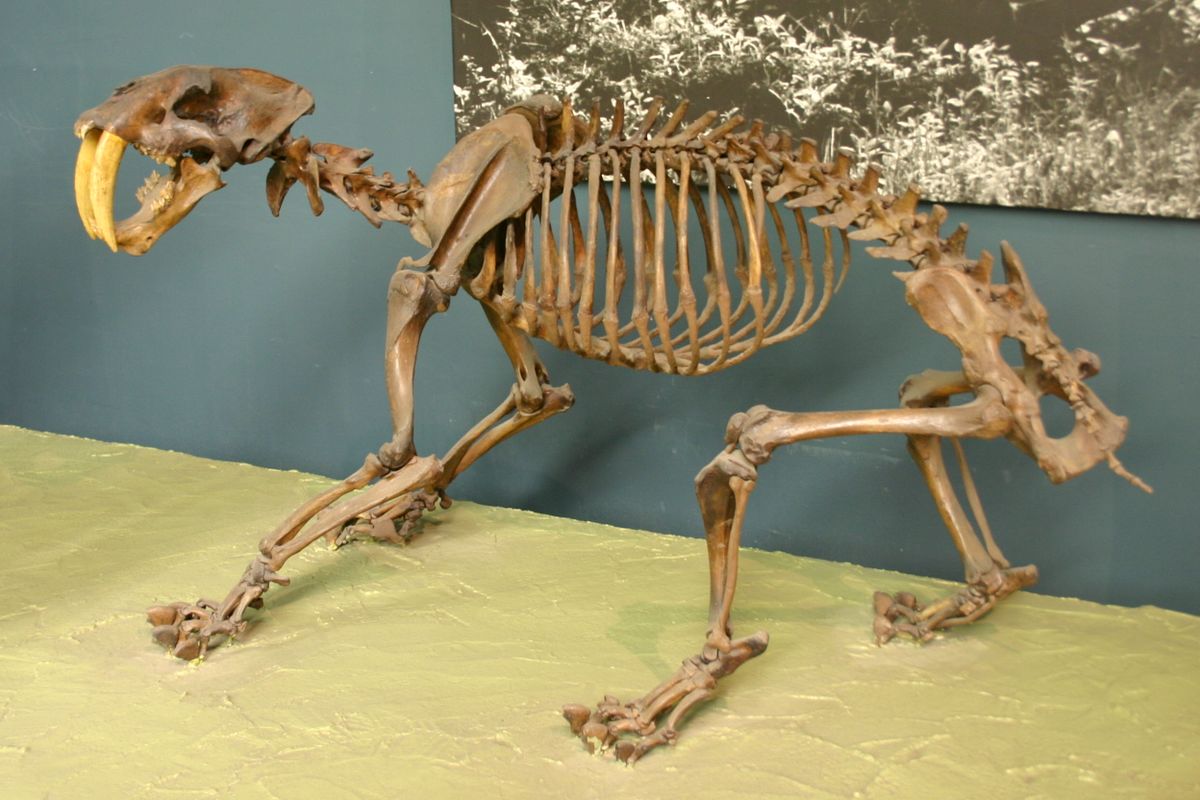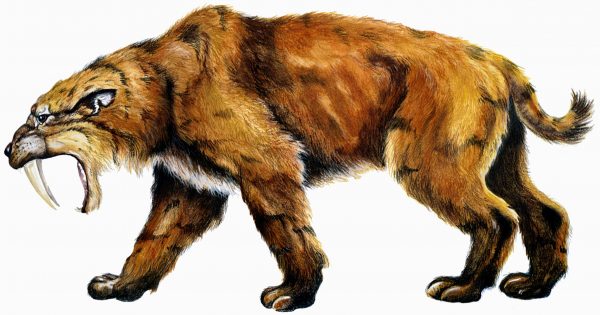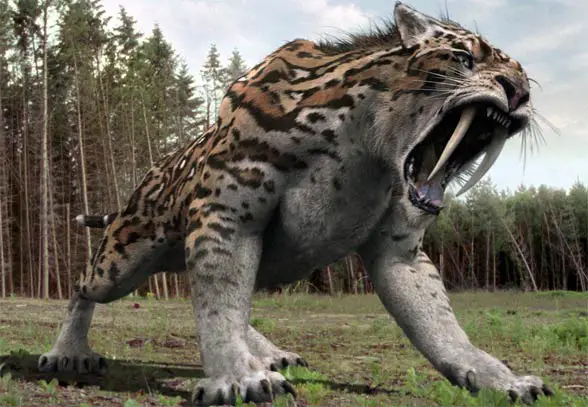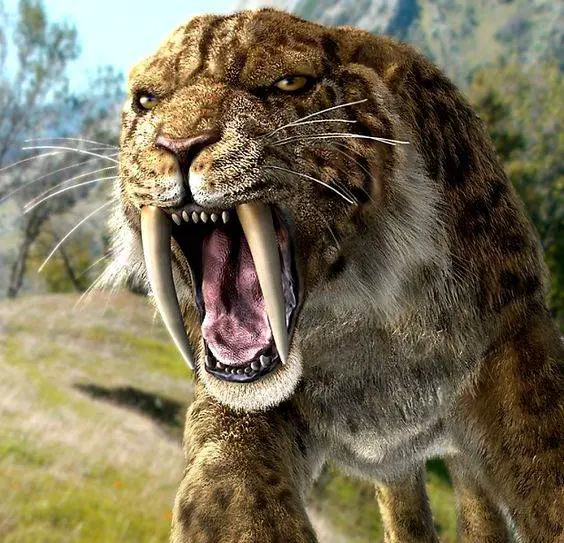The Saber-Toothed Cat, also known as a Saber Tooth Tiger, is a prehistoric predator belonging to the subfamily Machairodontinae, went extinct at the end of the Ice Age about 10,000 years ago. This means that it is not alive today, and you cannot see it. You may have heard about it because it is very popular due to its unique and amazing appearance. You might wonder what a Saber-Toothed Cat looks like, as it is popular, has an attractive name (saber tooth tiger), and has an amazing appearance. Here at Kidz Feed, we have gathered a lot of information, pictures, and videos to give you a complete overview of What does a Saber Tooth Tiger Look Like.
What does a Saber Tooth Tiger Look Like
Two Long Canines
The most distinguishing feature of the Saber-Toothed Cat is its pair of elongated, saber-shaped canines that were very sharp. These long, sharp canines are adaptations for hunting large prey. The pair of canines can grow up to 8 inches (20 cm), while the lower canines are smaller in size. They extended out from the mouth even when the mouth was closed. To use these canines for hunting, the Saber-Toothed Cat was able to open up its jaw up to 90 degrees, which is much more than modern cats. These teeth grew to full size three years after birth.

Saber Tooth Tiger Size
When compared to modern-day predators, the size of the Saber-Toothed Cat varied depending on the species. For example,
- Smilodon fatalis was similar in size to that of modern African lions. However, it was much stronger and had shorter limbs.
- The mass of different Saber-Toothed Cat species ranged from 55 kg to 400 kg.
- The length of the body was around 5.7 feet (175 cm).
- Its shoulder height was around 100 cm.
- It had a large head and strong neck muscles to capture large prey using its mouth.

Physical Appearance
Some of the physical features of the Saber-Toothed Cat are so unique to it that they are called the saber tooth suite. These adaptations for hunting large prey include:
- Elongated Canines
- Wide gape
- Bulky forelimbs
- Shorter hind limbs
- Powerful neck muscles
Its body was more robust when compared to modern-day cats and was more like a bear in build. It had a short tail, unlike those of lions and tigers. No fossils of Saber-Toothed Cat skin or fur have been found yet, so no evidence exists regarding their color patterns. Based on plant fossil evidence of that time, paleontologists believe that it may have had a dappled coat similar to that of a cheetah or bobcat.

Facial Features
Saber-Toothed Cats had relatively short, broad skulls when compared to those of modern big cats. Their orbits (eye sockets) were positioned more toward the front of the skull, providing them with a greater degree of binocular vision, which would have been useful for judging distances while hunting. They also had a more prominent sagittal crest, which is a ridge of bone on top of the skull that serves as an attachment point for powerful jaw muscles. This would have allowed the Saber-Toothed Cat to have a stronger bite force.
Coat Patterns and Camouflage
Although no direct evidence has been found regarding the coat patterns of Saber-Toothed Cats, paleontologists can make educated guesses based on the habitat and hunting behavior of these predators. Since they likely ambushed their prey in wooded environments, it is possible that their coats had camouflage patterns similar to those of modern-day leopards, jaguars, or other forest-dwelling
Saber Tooth Tiger Sound
The Saber-Toothed Cat had a hyoid bone similar to that of a lion in shape and size. This means that their voice box could probably produce a roaring sound similar to that of modern-day lions. However, this information is speculative, as there is no direct evidence of the sounds these animals made. The comparison to the hyoid bone and voice box of modern-day lions is a reasonable hypothesis, but it is not a confirmed fact.














Saber tooth tigers are cool
they are
I appreciate the article and the content. However, the grammatical errors throughout this article are hair raising. Your ” awesome ” team of students and teachers need to crack open a 3rd grade Grammer book! Seriously, This article is written so poorly you should be ashamed of the basic grammatical errors found throughout. SMH!
Sorry for the inconvenience. The article has been updated and all mistakes have been removed.